



johndoe@gmail.com
Are you sure you want to reset the form?
Your mail has been sent successfully
Are you sure you want to remove the alert?
Your session is about to expire! You will be logged out in
Do you wish to stay logged in?
This page brings together all of the previous Topic in Focus collections in one place, providing a unique way to explore the rich material available on the Bloomsbury Food Library. From eBook chapters and encyclopedia articles, to museum images and exclusive research and teaching resources, these Topic In Focus collections are your gateways to discover key topics within the field of Food Studies.
Please note that you will need to be logged in to view the content featured below
‘Happiness is a small house, with a big kitchen’ — a quote attributed to Alfred Hitchcock. Whilst this thriller director is not readily associated with domesticity, and the sentiment may be a simplification, kitchens are without doubt meaningful places. Hearths of the family home, epicentres for human sustenance, cooking pots for gender tensions, hubs for technological trials and sinks of dirty washing ̶ kitchens are the backdrop for both empowerment and entrapment. A shiny surface might not be all it seems and a solid splash back panel is worth the investment.
This piece will bring together a variety of free content from Bloomsbury Food Library, exploring the plethora of cultural significance that can be found in the cupboards of these imperative and complex domestic spaces.

The Kitchen is a discursive space where ideologies of masculinity and femininity are solidified. Ellen Cox astutely argues in this chapter from Food, Masculinities, and Home: Interdisciplinary Perspectives (2017), that the saturation of male celebrity chefs and male cooking personalities, somewhat counterintuitively, helps to solidify the long dominant gender ideology that constructs domestic foodwork as the purview of women. Despite shifting gender expectation in other aspects of men and women’s lives, sociological literature presents women's cooking as an “other-orientated responsibility” directed towards the health and comfort of loved ones, whilst male cooking is “self-orientated leisure”. When females are given the opportunity to appear on television, they are presented as domestic cooks, emphasising the responsibility of preparing family dinners. Cox suggests we have entered an “ideological fantasy” where we are able to convince ourselves that our actions are already much closer to the ideals we endorse – whilst men have been positively empowered to enjoy cooking, that has not by proxy allowed women to liberate themselves from the domestic kitchen without complication and obstacle.

Whilst gadgets such as Wi-Fi enabled chopping boards and AI kitchen assistants are exciting in their novelty, Tania Lewis, in this chapter of Digital Food: From Paddock to Platform (2020), cautions that a hyperfocus on high-tech appliances and connected devices, encourages a society of individualism and consumerism. For example, the ‘smart fork’ can be viewed as a symbolic assignment of responsibility for tackling obesity onto the individual rather than public bodies, whilst the notion of food delivery drones, risks the employment of a large group of human food deliverers. Kitchen tech may offer efficiency and ease of living, but the exchange is that our behaviours and data becomes commodified, and under the control of large companies. Data is not neutral, but situated in social and cultural contexts. Additionally, e-waste and the energy required to produce digital kitchen technologies also needs to be taken into consideration when deciding how much we integrate it into our kitchens. Lewis envisions a future where advances in technology move beyond ‘smart kitchens’ and are used to create more “global and collective opportunities for sharing culinary knowledge, pleasure and skills”.

A kitchen’s appearance and function are shaped by cultural, societal and political factors. Susan Parham proposes in this chapter from Food and Urbanism (2015) that kitchens are ultimately intertwined “with the events and transformations at wider scales that are understood as public”, with cultural and religious mores moulding the space. By example, Italian immigrant women in post-war United States and Canada often had both an upstairs kitchen to demonstrate success in their adopted lives, and a basement kitchen for cooking and feeling at home.
Across the twentieth century, kitchens have been “...metaphors for modernism and microcosms of new consumer regimes”; places where one can express status and social capital through food and entertaining. Moreover, issues including poverty intersect with design. In Belgium’s 1930s experience of the ‘rational kitchen’, it was within architectural discourse and among bourgeois and middle-class women that these ideas were received most positively (Van Caudenberg and Heynen 2004: 24). Meanwhile, Belgium’s working-class and countrywomen continued to prefer a living-kitchen space in which family eating, socializing and relaxing could all take place in one large room. Symbiotically, kitchens shape us, and we shape kitchens.

No two kitchens are the same: across the globe, one can detect an array of purpose and significance in these domestic spaces. Michael J. Pettid carefully traces the evolution of the Korean kitchen space in this chapter from Korean Cuisine: An Illustrated History (2008), making note of the gender dimensions shaping the space. In Korean homes of the nineteenth century, kitchens were located next to the female quarters, called the anbang in the inner parts of the house, with the heat of the kitchen hearth warming the anbang. The well-being of the kitchen, and thus the family, was regulated in the folk beliefs of pre-modern Korea by the female kitchen god (chowang kaksi), with the eldest woman in the house making a daily offering to the God.
Grain and rice held great value and were locked up in a wooden chest: the transfer of the rice chest key from mother-in-law to daughter-in-law was the final step in acknowledging her control of her husband’s household. In Chosŏn society meals were not served in the kitchen – tables of food were carried to the men’s quarters, with women eating after in their quarters. Traditional Korean Kitchens were a result of Confucian notions concerning gender and sex separation.

Bare cupboards and empty drawers are truly amiss in domestic bliss! Kitchen utensils and appliances vary hugely based on time period, location and culture. Bloomsbury Food Library's image collection from the Culinary Arts Museum at Johnson & Wales University provides images of exciting 20th century kitchen objects. Marvel at a Smoothie Instant Home Mixer from 1946 and its accompanying packaging — ‘Delicious Frozen Desserts for the Entire Family’, and examine a Stanley water bottle from 1953...before the bottle model enjoyed its 21st century TikTok fame!
Since the dawn of cinema, food has always been intrinsically linked with film. From grazing on popcorn and sweets to the way food and drink have contributed to some of the most iconic cinematic lines, such as James Bond’s martini creating the line “Shaken, not stirred”; movies highlight how food plays a vital role in reflecting the culture of the time.
Food is used within films to help transport the audience into another country or world and has the power to evoke emotion and memory as well as being used as a key marketing tool to sell and advertise brands. The iconic and beloved beverage coca cola being a prime example, being a dominant fixture from the silent films of the 1920s to modern day.
Below, we have brought together some free content from across the Bloomsbury Food Library which examine the ways in which food and film have interacted throughout the years, looking at topics such as gender, food placement, and the humble concession snack.
Get your popcorn at the ready, and read on to learn more!

A cinema trip for many people would entail a visit to the concession stand to pick up snacks for the film. Many brands over the years have capitalised off of this, including Ben and Jerry’s who have ice cream available at most cinemas, and even film franchises who use popcorn buckets as a marketing tool, such as the Dune popcorn bucket from Warner Bros., or the Taylor Swift popcorn bucket for The Eras Tour Movie. This chapter from Food and Drink in American History (2013) describes the resistance theatre owners had to selling snack foods when motion pictures began to rise in popularity in the early 20th century, and explains that it wasn’t until the Great Depression that theatre owners began to significantly change their attitudes. They detail how popcorn became the most popular snack, partly due to its aroma that filled cinemas and drew customers in, and explain why popcorn is still popular to this day

The Joy of Eating (2021) delves deeply into the cultural celebration of food which is prominent in contemporary American culture, exploring how the recent food renaissance has seen a rise in food-based media, including food-themed television shows, documentaries, and networks. This chapter details how food has been present in films since practically the beginning of cinema, but in the 1980s corporations began to make deals with film studios to use food as product placement in movies. A key example of this was in Steven Spielberg’s 1982 hit, E.T., in which the extra-terrestrial is seen eating Reese’s Piece’s candies. Hershey’s “went on to see skyrocketing sales of Reese’s Pieces as a result of the exposure in the film”, proving that food product placement in films was a complete success for both industries.

Throughout cinematic history, food and drink have been used as props to help reinforce a place or setting, whether that be a time period, an atmosphere, or an actual location. For example, in Back to the Future 2 (1989), a futuristic version of a Pepsi bottle was seen in the film to help indicate that the characters had travelled to an alternate future, showing how products can be used to contextualise a scene or movie more generally. This chapter from Dumplings (2015) details how the animated film Kung Fu Panda (2008) contains “entertaining scenes that revolve around dumplings”, helping to establish the setting as Ancient China. The dumplings play a large role in the main character, Po’s, identity, “a clumsy, dumpling-loving panda who aspires to become a kung fu master”.

In many cultures, food and cooking have often been deemed as feminine realms, as they have been frequently associated with domesticity and housework. Cinema is often used to reflect culture by continuing to represent women in these domestic settings, but it also has the potential to subvert this ideology in various ways, breaking away from society’s stereotypes. In Food, Masculinities, and Home: Interdisciplinary Perspectives (2017), the authors explore the long-held associations between women, home, food, and cooking, and detail how food practices can shape ideas of masculinity and ‘the home’. In this chapter, Fabio Parasecoli examines several American mainstream comedy movies from the early 1990s to late 2000s which portray men and food in interesting dynamics. In the film Mrs Doubtfire (1993), the gender conforming identities are subverted immediately through the use of drag, which allows Robin William’s character of Daniel to enter into the realm of the kitchen. In the film, food helps Daniel’s character “negotiate his role as father and his duties as caretaker”, and therefore becomes “an empowering tool”.

Food is often associated with pleasure, but What’s Eating You?: Food and Horror on Screen (2017) details how food is used in horror films to portray the contrasting emotions of both pleasure and disgust. The author discerns that horror movie directors that utilise food within their plots are more likely to evoke disgust in the viewer, as they understand that “the quickest way to the audience’s gag reflex is through its stomach.” This chapter argues that horror movies depict the well-known saying “you are what you eat”, showing food to be the pivot point between the normal and the monstrous American family. The author highlights three key films in the horror genre in order to examine the relationship between food and horror, focusing on Psycho (1960), The Texas Chainsaw Massacre (1974), and Poltergeist (1982), and examines the correlations between the slasher film narratives and the farm-to-table ethos.
To celebrate the 2024 Oxford Food Symposium we have brought together some key material exploring the fascinating world of gardens, flowers and fruits to whet your appetites.
Francis Bacon termed the garden ‘the purest of human pleasures’; Luther Burbank donned flowers ‘sunshine, food and medicine for the soul’, whilst Walt Whitman declared ‘Give me juicy autumnal fruit, ripe and red from the orchard.’ Green spaces and green things inspire us, as well as cultivate our mental, physical and nutritional health. The resources below peel back the wonderfully hearty layers of meaning that have been imbued on these natural wonders.

The pioneering Edible Food series serves numerous tart and taut texts, exploring how people have interacted with various fruits and flowers across the centuries, and we have highlighted a select few favourites here. Pomegranate: A Global History explores the pomegranate’s special role in various religious contexts as well as its significance to several figures including Anne Boleyn and Salvador Dalí. The iconic and millennial-revered avocado is explored through lively anecdotes, colourful pictures and delicious recipes in Avocado: A Global History. Edible Flowers: A Global History explores how flowers have blossomed in the world of cuisine, being used to add value and meaning to dishes in both daily life and for special occasions.

Using primarily ‘Bernesque’ literature, this chapter in Food Culture and Literary Imagining in Early Modern Italy: The Renaissance of Taste offers a luscious exploration of the ways a number of Renaissance Italian poets both adopted and informed the sexual connotations of fruits and vegetables in their works. Laura Giannetti challenges the position that these works are merely parodies of ‘serious’ lyric poetry, proposing they ‘…fed off contemporary cultures of food and Galenic medicine and participated in debates on the senses and the body through metaphors and clever wordplay.’ The ‘Capitolo in lode delle pèsche’, composed by Francesco Berni in 1522, is the first poem dedicated to peaches, and was widely recognized as the antecedent for all licentious poetry on fruit and other foodstuffs in the sixteenth century.

The Bloomsbury Handbook of Indian Cuisine explores the cuisine and foodways of India in all their diversity and complexity, including regions, personalities, street foods, communities, and topics that have been often neglected. This insightful entry explores the use of Rosewater and Kewra Water in Indian Cuisine, both being luxurious ingredients associated with special occasions and religious events. The captivating origins of Rosewater are discussed in detail as well as the delicious dishes flavoured with the water, which include sweetmeats jalebi and sandesh, deserts such as payasam and firni and drinks such as sherbet and sweet lassi. Kewra water, which is extracted from the flowers of the screw pine, is added to deserts such as kheer, barfi, jalevi and rasgulla due to its soft and sweet scent.

This chapter in Food and Urbanism: The Convivial City and a Sustainable Future surveys the role of gardens across the globe, from Ancient times to modern day. Susan Parham plants the notion that pre-World War II, gardens were sites of productivity: Egyptian sources show walled garden spaces used to grow fruit and vegetables from around 6,000 BC, and right up to mid-twentieth century, allotments or summer gardens were common in Europe’s towns and villages. Post War, the role of gardens shifted from being sites of food production to sites of consumption and display – a manifestation of identity to be observed and, sometimes, flaunted. However, despite this general trend, some owners are reanimating the garden as a productive domestic landscape, demonstrated by the resurgence of Potagers and kitchen gardens.

Bloomsbury Food Library provides digital access to delectable image collections from leading archives and galleries across the globe. The National Archives Image collection is overgrown with fantastic images that take garden and fruits as their subject. A captivating shot from 1944 of a Fruiterer in The City of Peshawar; British World War propaganda posters encouraging the public to continue the war effort through growing their own fruit and veg; an eye-catching advert from 1906 for the brand Bale depicting scrumptious fruit and flowers. This and more can be found in the collection.
The relationship between fashion and food is deliciously complex: Katy Perry’s fun Moschino Met Gala after-party burger dress coexists alongside enduring accusations that the fashion industry perpetuates disordered eating habits, both for models and consumers. Food and fashion both appeal to consumers through narratives of evanescent desirability, so when the industries join forces, the influence on culture can be colossal. We have brought together some key resources from across the Bloomsbury Food Library that explore how food and fashion can coalesce to create an amuse bouche of cultural delight.

Food and Fashion (2023) examines how fashion and food have been utilised to express cultural movements across centuries, through beautiful full-colour images, captivating case studies and written scholarship. In this chapter, Elizabeth Way explores how cuisines that connect Black people to their African and diasporic culture have shaped the global fashion landscape. It includes a detailed taste of the monumental work of designer Patrick Kelly, who “used his fashion practice to explore and recontextualize controversial images of Blackness”, and tucks into the work of Stella Jean, who regularly partners with indigenous artisans to produce materials for collections inspired by African culture.

In Gastrofashion from Haute Cuisine to Haute Couture (2022), Geczy and Karaminas trace the relationship of food and fashion back to the Middle Ages. They explore the origins of the current appeal of linking fashion and food, demonstrating how food and fashion are increasingly marketed in tandem to reinforce each object’s capitalist power. Food has long been a means to express social prestige, with the code fluctuating between thinness and plumpness, depending on the historical context. This chapter debates whether the fashion industry has really been able to rid itself of ‘the cult of slenderness’, “an ideology that places the shape of a slender body at a premium in ideal body images of men and women.”

For hundreds of years consumers and scholars alike have acknowledged that food is affected by the same rapid shifts in taste as clothing; just like fashion, food is consumed and sold as a fashionable commodity. Yet despite this, the reciprocal relationship between fashion and food has not been fully explored – until now. This chapter from Gastrofashion from Haute Cuisine to Haute Couture (2022) documents the intimate relationship between fashion, food and art through analysis of some of the most iconic art and fashion crossovers, such as Elsa Schiaperelli’s Dali inspired eccentric Lobster Dress, worn by Wallis Simpson, and later by Anna Wintour. Also under the spotlight is Lady Gaga’s 2010 MTV Awards protest meat dress.

The Invention of Taste (2016) provides a detailed overview of the development of taste, from ancient times to the present. At the heart of the book is an intriguing question: why did the sensory attribute of human taste become a social metaphor and aesthetic value for judging cultural qualities of art, fashion, cuisine and other social constructions? This chapter examines how the intertwined phenomena of haute cuisine and haute couture flourished in Paris, and became “commercial formulas” for cultivating ‘impure tastes’ — passion for the vices of gluttony and vanity. Luca Vercelloni argues that food and fashion embrace the ephemeral, and are able to construct "widespread and highly influential forms of self-image”, despite being transient commodities. For style to have bite, both in the kitchen and the on the runway, it must be inherently unstable and shifting.
On Animals: Volume Two (2018), presents an authoritative and comprehensive survey of human practice in relation to other animals. David Clough focuses on the use of animals for human clothing, and proposes that harming the welfare of animals in this way does not align with Christian values. Through a survey of the diverse animals used in clothing, including kangaroos to silk worms, this chapter argues against the proposal that using animal material avoids waste within the food industry. Leather and wool contribute to the profits of the meat industry, and cannot be viewed as by-products. Slaughtering animals to create luxury fashion items is interpreted to be even more reprehensible in a Christian framework, with absolutely nothing to balance the prima facie wrong of killing a fellow creature.
The Bloomsbury Food Library is excited to introduce a brand new eBook collection featuring key works from the Reaktion Books food lists. With titles from the pioneering Edible, Food Controversies, and Food and Nations series, this vibrant collection provides access to engaging eBooks on important subjects, from the history of key food and drink items, to the topical debates surrounding food waste, food adulteration, fast food, and more. This Topic in Focus is your guide to explore the collection and delve into the global history and culture of food.
Find out more here or read about some of the titles below.

Edible is a revolutionary series of books on food and drink which explores the rich history of man’s consumption. Each book provides an outline for one type of food or drink, revealing its history and culture on a global scale. Vibrant illustrations, key recipes and reference material accompany these engaging and accessible texts, and offer intriguing new insights into their subject. An engaging example is Jeff Miller’s intriguing work, Avocado: A Global History (2020). Today the avocado is as familiar as the apple, but as little as one hundred years ago, the fruit – yes, it is a fruit - was scarcely known outside of its ancestral homeland in the verdant valleys of Michoacán.
Click here to read more about the fascinating history of this well known, but little understood, fruit.
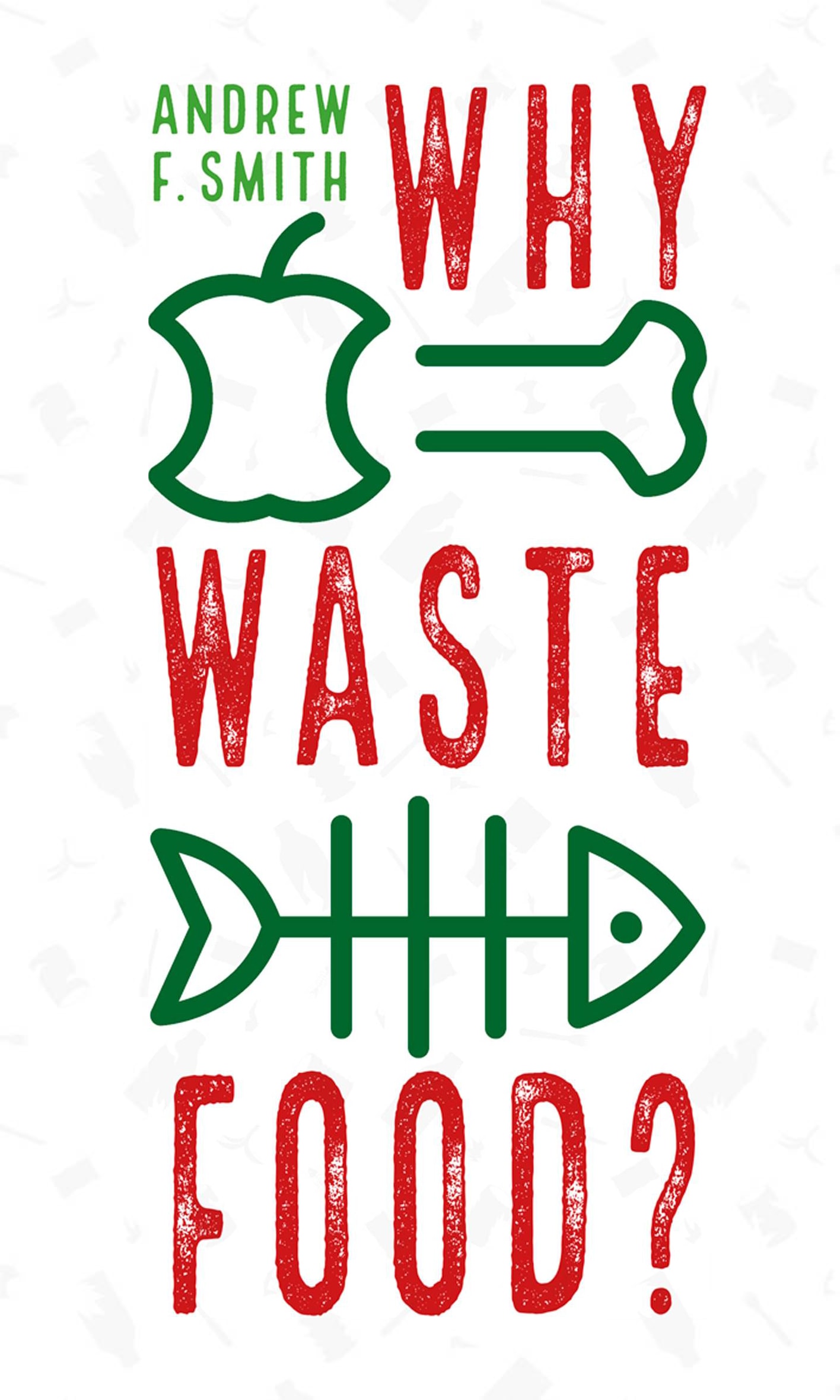
Everybody eats. Yet few understand the importance of food in our lives and the decisions we make each time we eat. The Food Controversies series probes problems created by the industrial food system and examines proposed alternatives. Andrew F. Smith’s Why Waste Food (2020) tackles one such issue, exploring the reasons behind, and global consequences of, food waste. This fascinating book examines causes of avoidable food waste and highlights programmes and businesses underway around the world to feed people, save the planet and make money – all using food that is frequently discarded.
Click here to read more about the war on food waste.
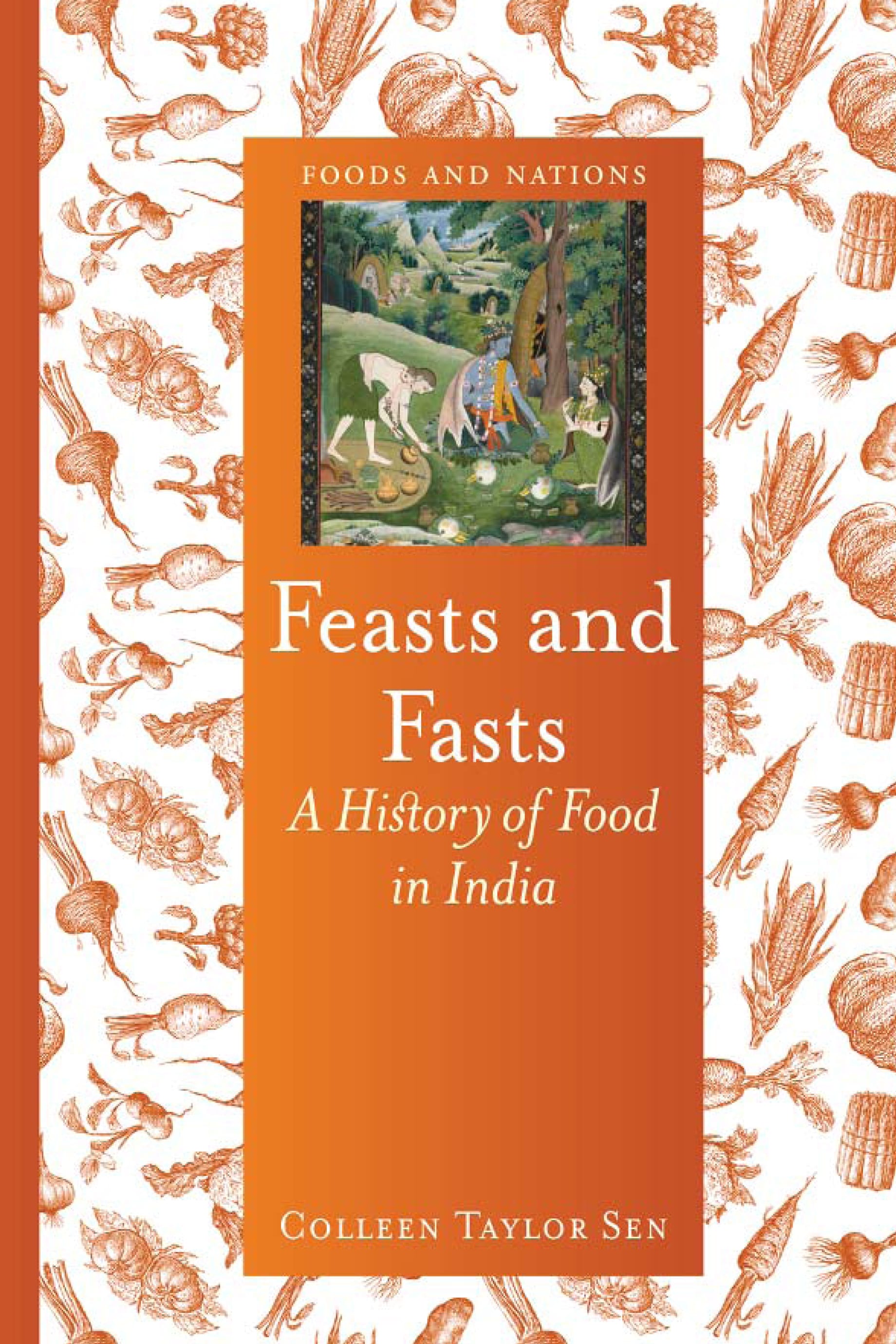
The Foods and Nations series explores the history – and geography – of food. Books in the series reveal the hidden history behind the food eaten today in different countries and regions of the world, telling the story of how food production and consumption developed, and how they were influenced by the culinary practices of other places and peoples. Each book in the series offers fascinating insights into the distinct flavours of a country and its culture. Feasts and Fasts: A History of Food in India (2016) by Colleen Taylor Sen traces the history of Indian food from prehistoric times to the present in the context of historical, social, religious and philosophical developments.
Click here to delve into the history of food and feasting in India.

A global history of restaurants beyond white tablecloths and maître d’s, Dining Out: A Global History of Restaurants (2019) by Katie Rawson and Elliott Shore presents restaurants both as businesses and as venues for a range of human experiences. From banquets in twelfth-century China to the medicinal roots of French restaurants, the origins of restaurants are not singular—nor is the history this book tells. From restaurant architecture to technological developments, staffing and organization, tipping and waiting table, ethnic cuisines, and slow and fast foods, this delectably illustrated and profoundly informed and entertaining history takes us from the world’s first restaurants in Kaifeng, China, to the latest high-end dining experiences.
Click here learn more about the long history of restaurants.
The Bloomsbury Food Library is excited to introduce a brand new eBook collection focusing on the important topics of food sustainability and security. With titles from Taylor & Francis, ABC-Clio and Zed Books, this vibrant collection provides access to key eBooks on vital and timely subjects, from climate change and agricultural development, and the politics of the global food system, to food aid in Sudan, equity and social food justice, and more. This Topic in Focus is your guide to explore the collection and discover more about food sustainability and security.
Read on to learn more, or click here to explore the full collection.
Sustainable Agriculture for Food Security: A Global Perspective (2021) takes an analytical approach to issues related to current agricultural practices. It looks at global geographical data and key statistical reports to aid readers in comparing, understanding, and making agricultural decisions. Edited by Acharya Balkrishna, this rich collection provides a historical overview of the socioeconomic importance of agriculture around the world along with a discussion on threats and opportunities in the agricultural sector.
Click here to read more and learn about organic farming, and the promising approach for sustainable agriculture in the future.

Genetically modified crops have become a key element of development strategies across the global South, despite remaining deeply controversial. The promotion of biotechnology is an integral part of 'new Green Revolution for Africa' interventions and is also intimately linked to the rise of 'philanthrocapitalism,' which advances business solutions to address the problem of poverty. In Contesting Africa’s New Green Revolution (2021), Jacqueline Ignatova uses interviews with farmers, policymakers and scientists to show how efforts to transform the seed sector in northern Ghana - one of the key laboratories of this 'new Green Revolution' - may serve to exacerbate the inequality it was notionally intended to address.
This chapter explores biotechnology, and the politics of food security.
Food sovereignty ― the right of peoples to define their own chosen food and agriculture, free of monopolization or threats ― is the path to stopping global hunger. Food as a Human Right: Combatting Global Hunger and Forging a Path to Food Sovereignty (2019) approaches the topic from a solutions-based perspective, discussing concrete policy providing for sovereignty, or control, of one's own food sources as a solution that, while controversial, offers more promise than do the actions of international organizations and trade agreements.
Click here to discover more about food as a human right.
The Ethics of Agribusiness: Justice and Global Food in Focus (2022) offers an original perspective on food supply chains, and argues that the ability to trade food on a global scale could be intrinsically good aside from any instrumental value that people gain from it. Shane Epting examines the structures of food supply chains, revealing the kinds of harm they help produce. They include slavery, abusive labor, geopolitical exploitation, ecological degradation, and public health impacts.
In this chapter, Epting delves into the intrinsic value of food chains and advocates for the sustainable food label to address issues of food justice and food sovereignty.
During the past 30 years, industrialization has fundamentally changed traditional rural life and agricultural practices in China. While the incomes of farmers have increased, serious issues have been raised concerning the environment, resource depletion, and food safety. Agroecology in China: Science, Practice, and Sustainable Management (2016) represents the work of experts and leaders who have taught, researched, and expanded Chinese agroecology and eco-agriculture for more than 30 years. It reviews decades of agricultural change to provide an integrated analysis of the progress of research and development in agroecological farming practices.
Click here to read more about the eco-agriculture systems in China.
List of recommended reading from this Topic in Focus:
The growing, farming, selling, preparing, and eating of food is a fundamental aspect of human life that can unite – and separate – society. With brand new eBooks, exciting podcasts and exclusive Lesson Plans, this Topic in Focus is your gateway into the vital and timely topic of food ethics.

Veganism. Animal rights. Feminism. Masculinity. Capitalism. The climate crisis. Racism. Author Carol Adams discusses how each of these issues is connected. If you’re eager to explore the intersectional relationships between them and discover how they relate to the way society thinks about meat consumption and gender politics, then this episode of the Bloomsbury Academic Podcast is for you. Carol J. Adams is a feminist-vegan advocate, activist, and independent scholar, and her new book Living Among Meat Eaters: The Vegetarian and Vegan Survival Guide (2022) is now available on the Bloomsbury Food Library.

How do we achieve food security for a global population now over 7 billion people and trending towards 10 billion by 2050? This study of the global dairy industry examines how to balance our needs with those of animals and the environment. In this chapter from Dairy Farming in the 21st Century: Global Ethics, Environment and Politics (2022) Bruce A. Scholten offers a multifaceted discussion of the ethics of dairying, and consumption of plant- and laboratory-based foods in the 21st century. No book to date offers such a comprehensive overview, linking ethics, environment, health and policy-making with in-depth coverage of the major dairy farming regions of the world.

A notable feature of contemporary life is the role food plays as a medium for social commentary and political action. Food is as visible in policymaking and is the focus of a good deal of campaigning and proselytizing. The prevalence of debates around food today demands interrogation, as it signals something important about the social and cultural worlds we inhabit. This chapter by Peter Luetchford from The Handbook of Food and Anthropology (2016) focuses on ethical consumption in mature capitalist economies. Food, it is argued, has become an increasingly visible ‘problematic’ in such contexts because it poses important social and political questions, as these increasingly emerge in the context of neoliberal globalization.

In her vital and timely book, Food Justice and Narrative Ethics: Reading Stories for Ethical Awareness and Activism (2018), Beth A. Dixon explores how food justice impacts human lives. With stories from national media, food and farming memoirs, and scholarly ethnographies, Dixon reveals how different food narratives are constructed, and enable identification of just solutions to issues surrounding food insecurity, farm labor, and the lived experience of obesity. Drawing on Aristotle’s concept of ethical perception, Dixon demonstrates how we can use narratives to enhance our understanding and ethical competence about injustice in relation to food. In this chapter Dixon introduce the concept of ethical perception and explains its role in the development of moral competence.

In this exclusive Lesson Plan, Rebecca Sandover highlights central discourses and debates in food and sustainability, such as; what is a sustainable diet? How can we move towards an increased consumption of sustainable diets? What is the role of individuals and government in addressing these issues? Central to these questions are the issues of the governance of individual actions, themes of sustainable and ethical food consumption, the role of food movements, issues of food justice, and more. With weekly readings, suggested discussion questions as assessment options, this unique teaching and learning tool will support instructors building their course, as well as independent students and researchers looking to expand their own research.

On Animals by David Clough (2018) presents an authoritative and comprehensive survey of human practice in relation to other animals, together with a Christian ethical analysis building on the theological account of animals which Clough developed in On Animals Volume I: Systematic Theology (2012). It argues that a Christian understanding of other animals has radical implications for their treatment by humans, with the human use and abuse of non-human animals for food the most urgent immediate priority. This chapter explores the use of animals to gain knowledge, through research, medicine, and education, and considers opposition to the practice through history through to present day.
What is the future of food in light of growing threats from the climate emergency and natural resource depletion, as well as economic and social inequality? The complex relationships between people, place and food is a fundamental issue that has never been so prevalent, or so crucial. From eBooks written by key scholars to exclusive teaching and learning tools, this carefully curated topic collection brings together the wealth of material available through Bloomsbury Food Library, and provides a gateway into the topic of Food Geographies and the powerful role that food plays in our everyday lives.
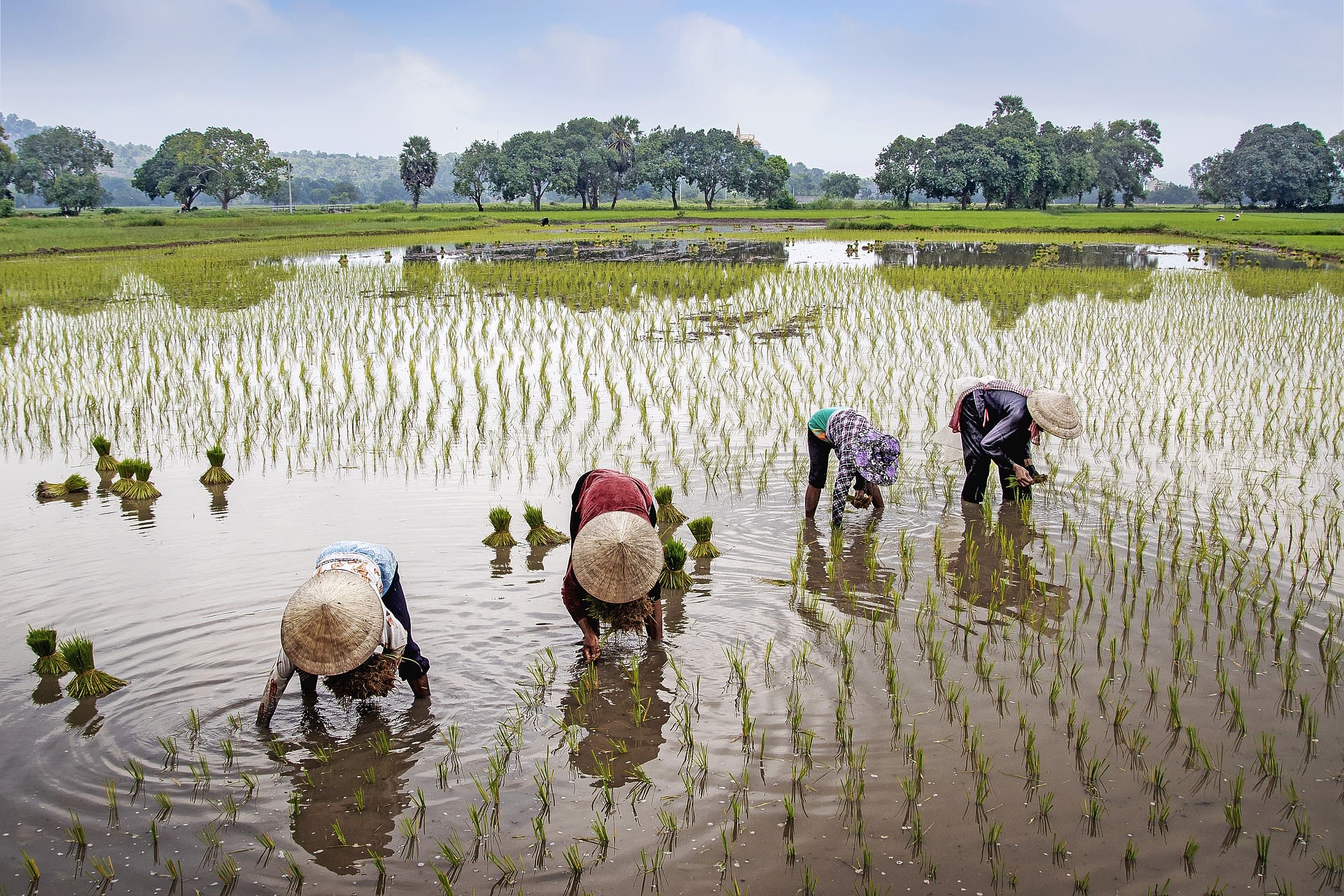
With over 60 colour images and a range of lively pedagogical features, The Geographies of Food (2021) explores contemporary food issues and crises in all their dimensions, as well as the many solutions currently being proposed. Drawing on global case studies it analyses the complex relationships operating between people and processes at a range of geographical scales, from the shopping decisions of consumers, to food insecurity in Sub-Saharan Africa, and the strategies of giant American and European agri-businesses whose activities span several continents. This chapter concentrates on the impacts of food crises in those regions which are most vulnerable to food insecurity, hunger, and malnutrition.

The study of food in all its dimensions offers insights into a wide range of pressing questions in human geography and related disciplines. Food occupies everyone to some extent, connecting people to plantation economies and histories, regulations and markets, commodity cultures and ethical consumption, and understandings and experiences of risk, scarcity, and abundance. This exclusive lesson plan by Marisa Wilson provides advanced undergraduate students with historical, political economic, and cultural understandings of food production, exchange/distribution, and consumption, and seeks to enhance specialist knowledge of agri-food geographies, including a range of processes related to food and its globalisation, past and present.
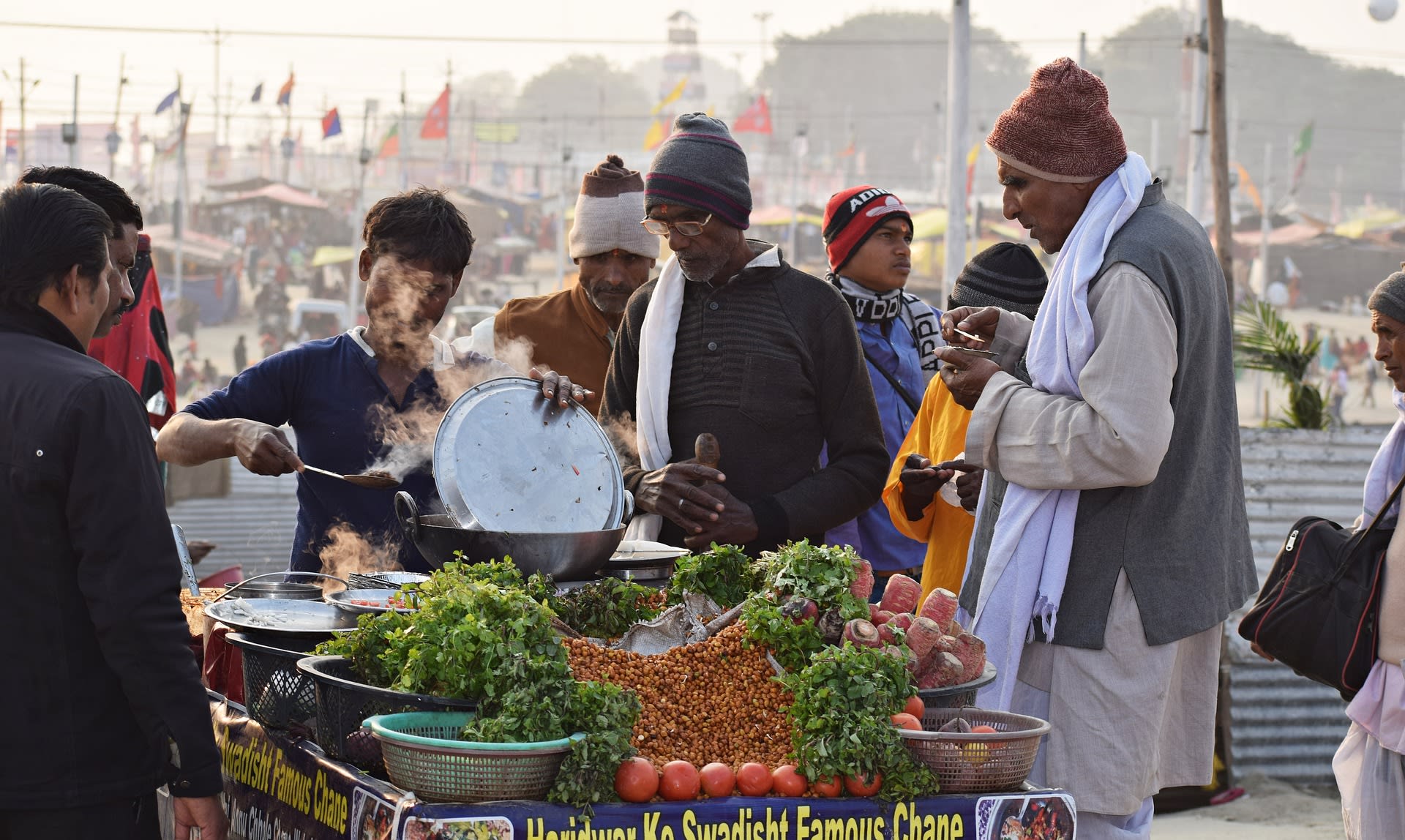
In Food Between the Country and the City: Ethnographies of a Changing Global Foodscape (2013), leading scholars in the study of food offer ethnographic studies of peasant homesteads, family farms, community gardens, state food industries, transnational supermarkets, planning offices, tourist boards, and government ministries in locales across the globe, building upon the foundation of Raymond Williams' classic work, The Country and the City (1973). In this chapter Johan Pottier looks at how Lilongwe’s migrant poor stay food secure, and recommends that the city, not the countryside, has a part to play to ease the problem of urban food insecurity.
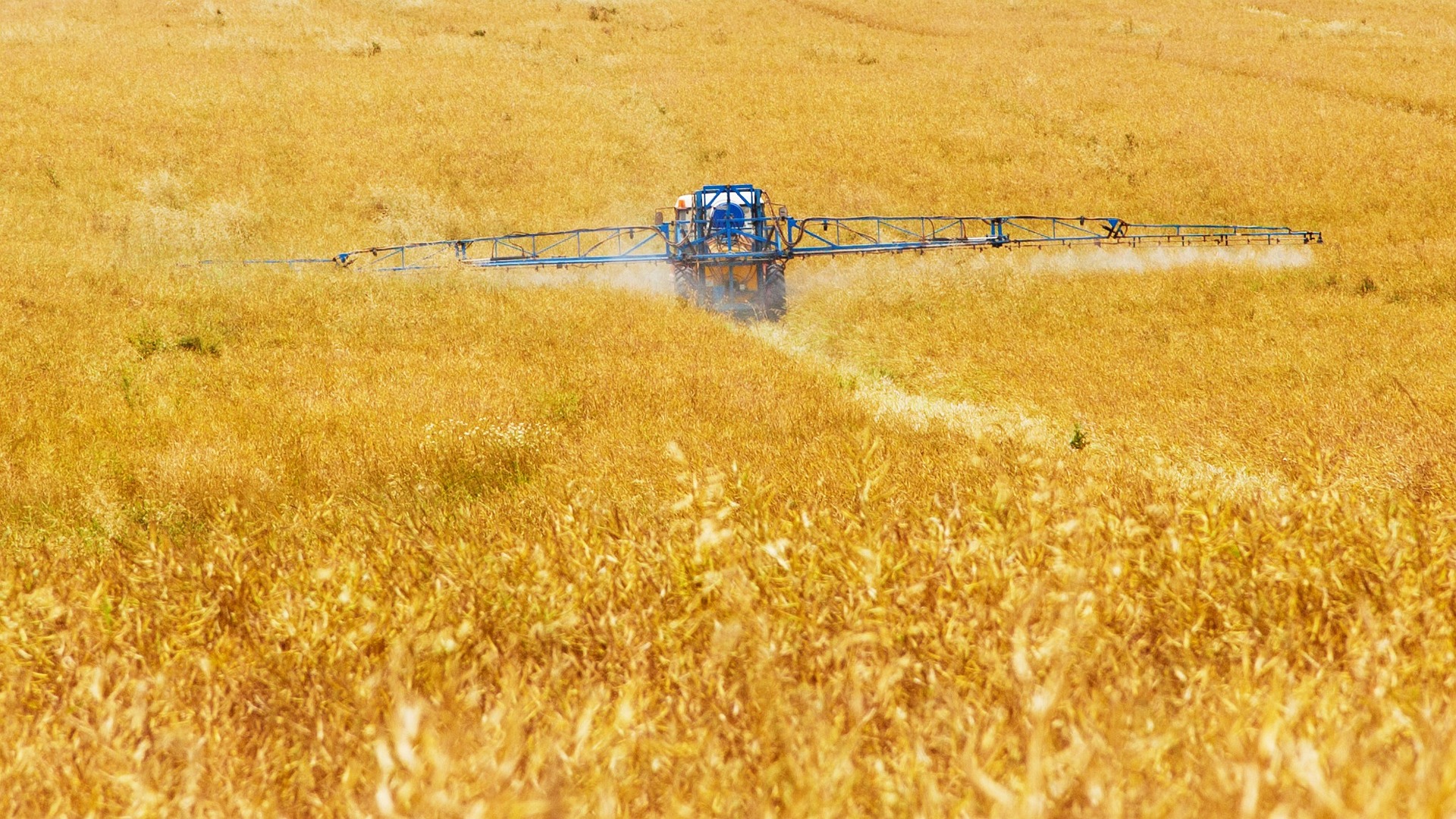
Concentration and Power in the Food System (2021) by Philip H. Howard reveals how dominant corporations, from the supermarket to the seed industry, exert control over contemporary food systems. This revised edition has been updated to reflect recent developments in the food system, as well as the broad political economic forces that shape them. It also examines the rapidly changing technologies which have the potential to reinforce, as well as to challenge, the power of the largest firms. This chapter analyzes the impacts of the evolution of organic standards throughout key segments of the food system, including distribution, processing, production, and agricultural inputs.
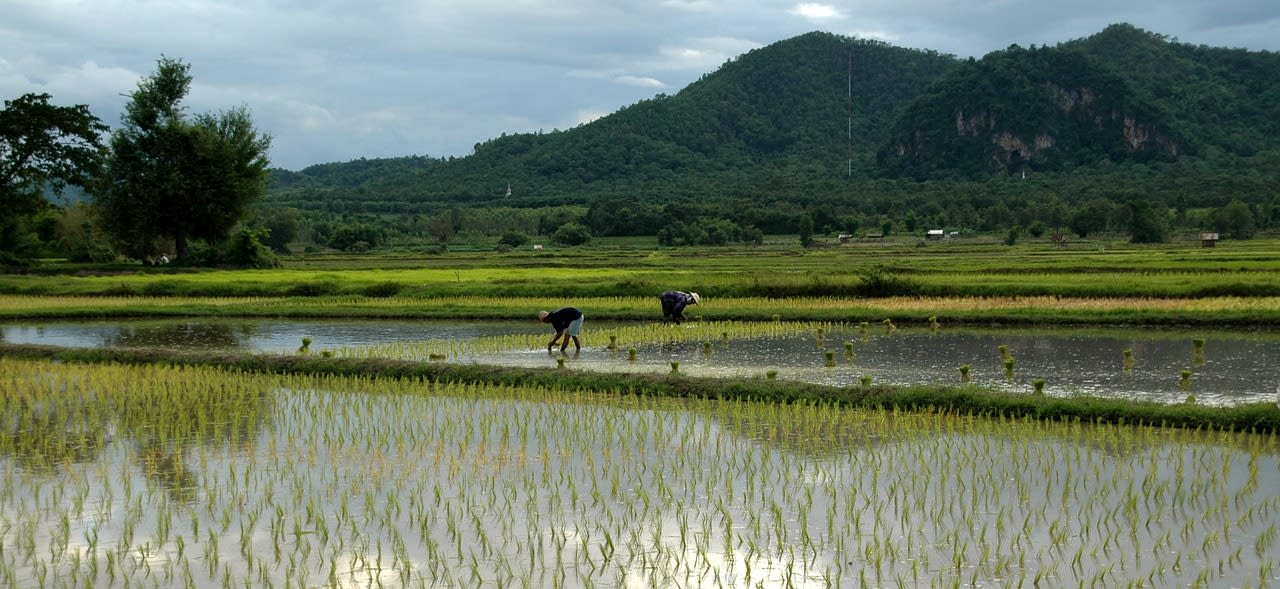
Food has a special significance in the expanding field of global history. Food markets were the first to become globally integrated, linking distant cultures of the world, and in no other area have the interactions between global exchange and local cultural practices been as pronounced as in changing food cultures. Food and Globalization: Consumption, Markets and Politics in the Modern World (2008) provides a historical overview of the relationship between food and globalization in the modern world, offering a fresh perspective on both global history and food studies. This chapter looks at the commercial rice cultivation and the regional economy of Southeastern Asia from 1850–1950.
Food defines us as individuals, communities, and nations, and has been used for centuries as a means of art and expression. From eBooks written by key scholars to digitised image collections, this carefully curated Topic in Focus brings together the wealth of material available through Bloomsbury Food Library, and provides a crucial gateway into the fascinating relationship between food and art.

UK Winner of the Entertaining category of the Gourmand World Cookbook Awards 2020, Feast and Fast (2019) explores food-related objects, images, and texts from the past in innovative ways and encourages us to rethink our evolving relationship with food. This richly illustrated book showcases hidden and newly-conserved treasures from the Fitzwilliam Museum and other collections in and around Cambridge. It teases out many contemporary and controversial issues - such as the origins of food and food security, overconsumption in times of austerity, and our relationship with animals and nature – through short research-led entries by some of the world's leading cultural and food historians. Click here to read more.
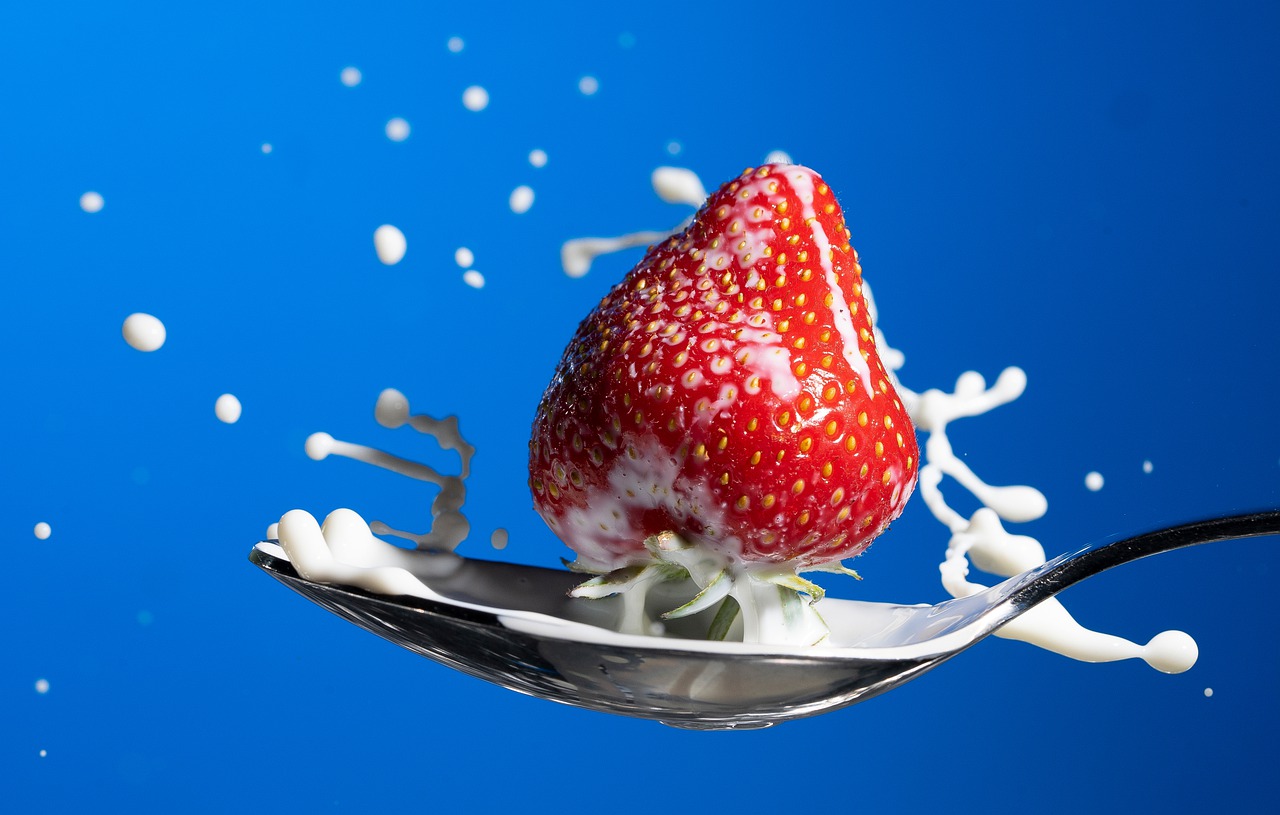
At the turn of the twenty-first century, the 100-year-long Home Economics project was reconfigured as critical art practice. Recipes become scores, orchestrating the performance of food. Marking a break from both domestic computing and Home Economics studies, second-wave feminist artists of the 1970s turned many assumptions from both of these fields upside down. Lindsay Kelley explores this further in this chapter from Bioart Kitchen (2016). Although the feminist movement shunned recipes and cookbooks, food and eating were central concerns. Feminist art responded to both Home Economics and domestic technology by developing tactics shared by food activists and ecofeminists. The kitchen became a political space capable of effecting change and mobilising resistance.

Will Cotton is a contemporary artist whose whole career revolves around his preoccupation with sweets and desserts. He connects a very traditional method of representation, realistic paintings on canvas, with contemporary discourses of desire, pleasure, the culture of fantasy, air-brushed beauty, and celebrity. The tradition goes back to Dutch seventeenth-century still lifes, many in the Vanitas style that often boasted exquisite depictions of exotic fruit such as peeled lemon, ripe peaches, half-eaten berry pies, oysters, and rare birds—all objects of pleasure and symbols of indulgence. In this chapter from Food and Museums (2016), Nina Levent interviews Cotton to discuss his inspiration, his process, and some of his recent projects.

Several chefs today offer culinary creations that prompt a multisensory experience: an emotional response sparked by a combination of flavors and textures, experienced intimately by each diner. In this chapter from The Handbook of Food and Popular Culture (2018), Yael Raviv will focus on exploring food as a medium for art (rather than a subject) and will examine the role of chefs at the intersection of food and art, within the larger narrative of food as a creative medium. Beginning in the 1930s, Raviv explores the role of food as a medium in certain avant-garde movements and looks at their influence on later work in the studio and the kitchen.

Bloomsbury Food Library provides access to a rich variety of images from leading galleries and museums around the globe. This painting by Dutch artist Frans Hals (ca. 1616-17) depicts Vastenavond (Eve of Lent, or Shrove Tuesday). Known elsewhere as Mardi Gras, the occasion is celebrated with a carnival devoted to foolish behavior and popular foods such as pancakes and sausages. The suggestion that the central figure is a boy in drag is supported by the hairstyle, which looks peculiar for a woman of the time. He is flanked by two familiar characters of the comic stage: on the left, Pekelharing (Pickled Herring), and at right, Hans Worst (John Sausage).

As the multisensory enters the mainstream, going from ASMR videos on Youtube to major advertising campaigns, awareness of the role our senses play in how we interact with the world has never been so high. Eating is of course a multisensory experience, as we engage with the visual, olfactory, haptic, taste and even auditory aspects of what we consume and produce. Explore some of our content that opens up discussion about the senses, and what that means for how we eat.
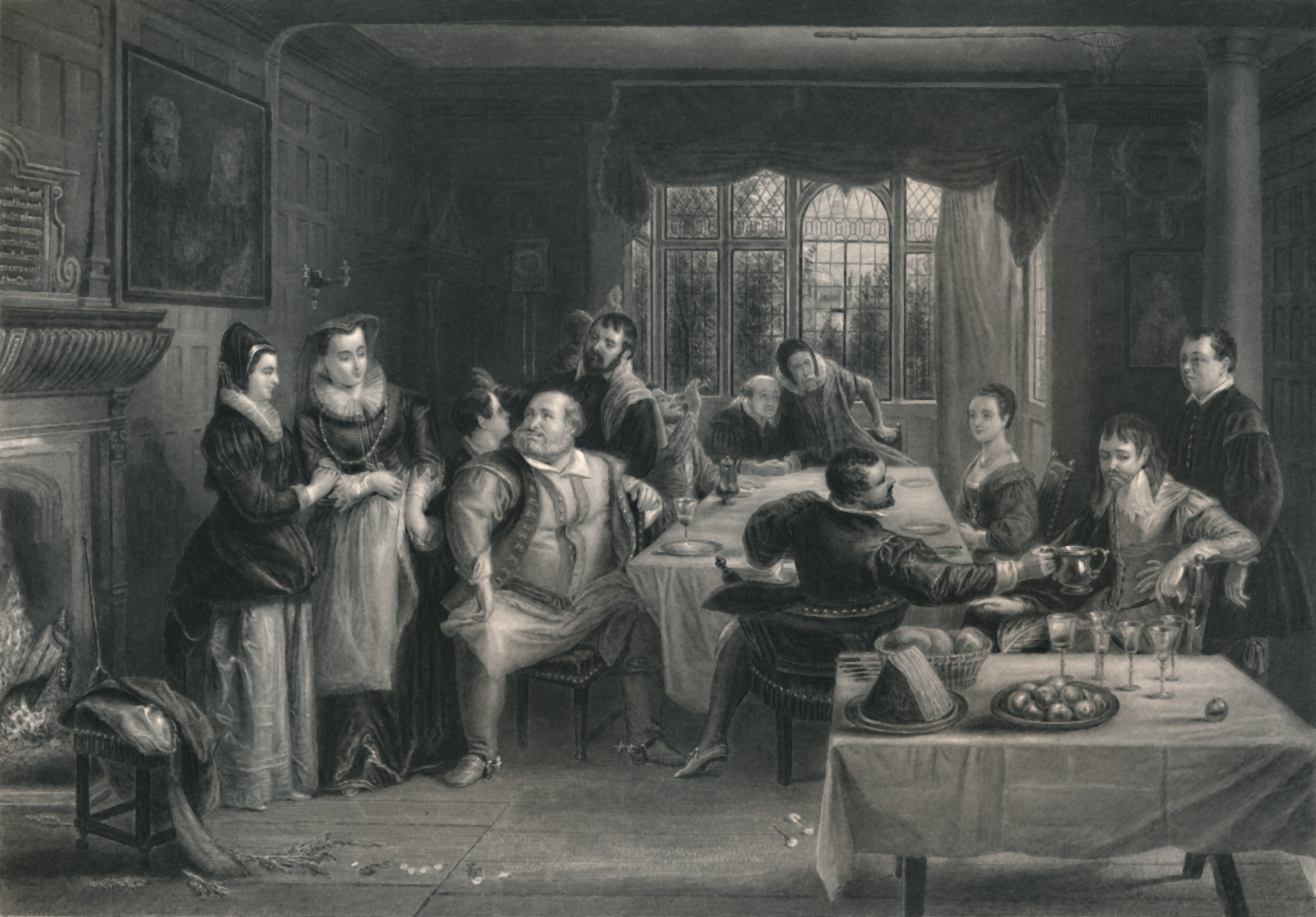
Does food have an aesthetic, and can it even be an aesthetic object? Explore with Jakob Wenzer in Food Words how, in the history of the hierarchy of the senses, visual and auditory are at the top while taste and smell have traditionally been relegated to the bottom. Food has been endlessly scrutinized in relation to its symbolic, visual powers in art history. But can the academic study of food extend to an appreciation of the other senses?

You may be familiar with Marcel Proust’s story of eating a madeleine and its evocative taste triggering an essential memory of times past. Work along with David Sutton in Remembrance of Repasts to learn how food has long featured in anthropological work as a means to create commensality, and how this links to taste and memory.

Would you eat jellied eel? How about fermented cabbage? Maybe those foods elicit feelings of disgust, as one person’s luxury is another person’s turn-off. But how does taste become enshrined within culture? This key question is one that is posed in the introduction to Making Taste Public: Ethnographies of Food and the Senses and scrutinised in the case studies that follow. The chapters consider taste as a social construct, and challenge the idea of taste as an elitist subject for discussion.

We often pride ourselves for having ‘good’ taste whether that be in food, art, fashion or other social aspects of life but what does that really mean? In The Invention of Taste, Luca Vercelloni explores the history of taste from Renaissance Italy through to modern day, tracking its transformation from a simple biological sense to an expression of sensibility.
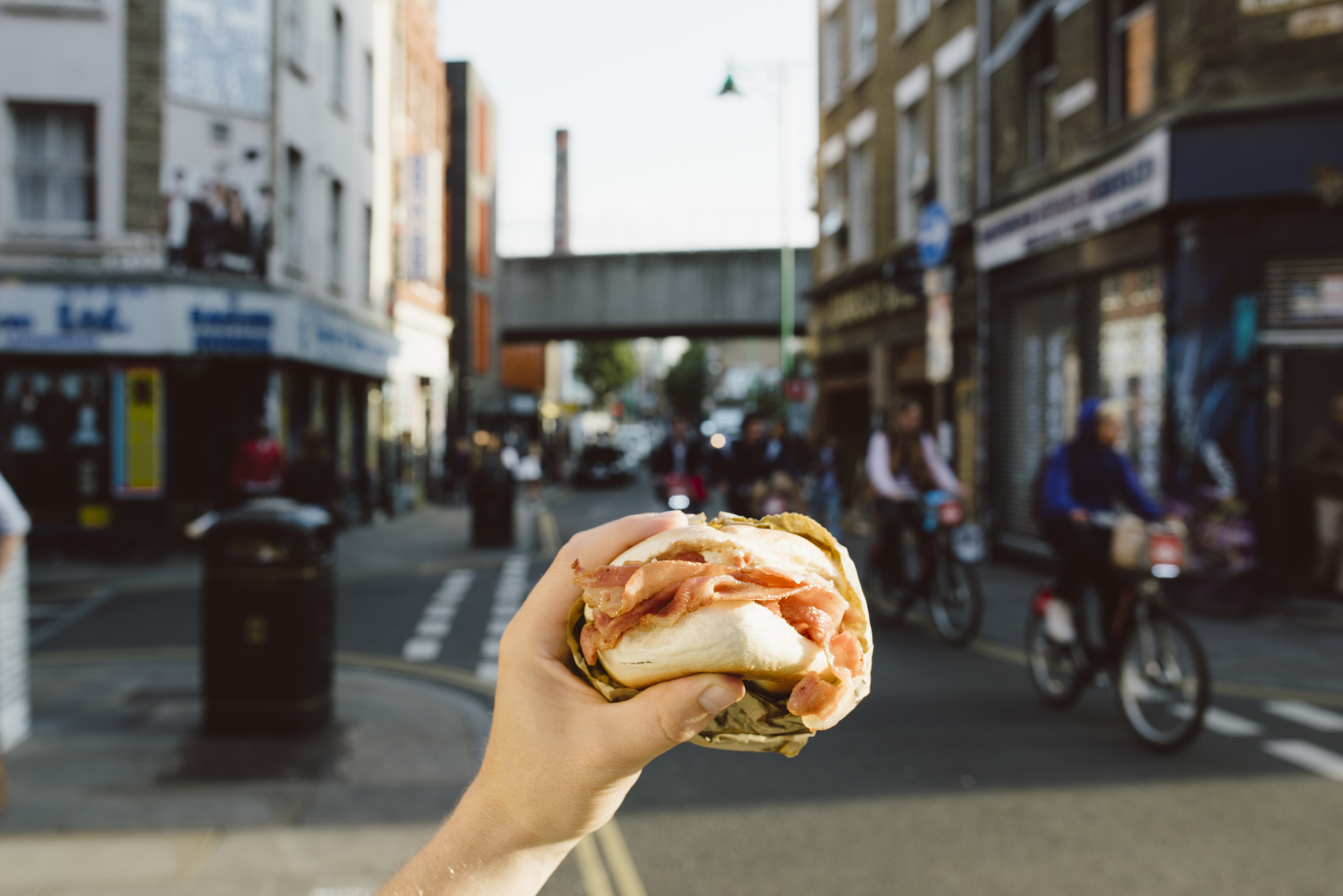
Join Alex Rhys-Taylor as he takes a sensory tour of East London in Food and Multiculture, and explores the material culture of the city. Rhys-Taylor shows how a multi-media ethnographic approach to his research opens up the multi-sensory, and argues that it is through smells and flavours that a new space comes to feel like home, and helps different immigrant population to shape their cultural identities.
With a new year comes the desire to start afresh: be healthier, more mindful, do your bit for a greener planet, and what better way to turn over a new leaf than by changing your diet? Vegetarianism and veganism have never been more popular as the economical, ethical, and environmental implications of eating meat and dairy become increasingly pressing.

Discussions around diet are rarely neutral affairs - with a certain amount of stigma attached to what people eat and with motivations for eating a certain way linked to cultural norms and religious morality. Learn about the Biblical roots for vegetarianism and whether Jesus was a vegetarian. Also, explore with Christophe Robert how refraining from eating meat can be considered life-affirming and nourishing due to the imperative to not kill during his time in Vietnam where Buddhist thinking is prevalent.

The philosopher Descartes argued animals could not feel pain, and that therefore killing them to eat was not problematic. More recent philosophy has moved away from this perspective. Read with Nigel Pleasants about the parallels of animal treatment and perceptions of slavery, and how nowadays the choice to give up meat is a much easier one.

Read why Carol J. Adams sees real issues with continuing to eat meat while attempting to challenge the patriarchy, arguing that our food choices either re-affirm or knock away at established hierarchies. Develop an understanding of the key tenets of both a feminist and vegan ethic of care, and how women and animals are aligned in marketing, advertising and language. Going meat-free may be even more political than you realise!

Plenty of research has shown that going vegan would lessen the impact of greenhouse gases on the environment. Kerry Walter notes that in the US, 400 million beef cattle are killed per year. These animals are well fed, and produce corresponding quantities of waste, which pollute the water and atmosphere around them. If we want to preserve our environment, is it necessary to stop buying in to the cattle and dairy markets?

Explore the “cannibal-savage” film genre with Erin E. Wiegand. This entire genre of horror films has been categorised around the killing and consumption of animals, and its parallels with killing and consuming humans. Shockingly, some films in this tradition feature real scenes of animals being killed. This genre addresses anxieties about our humanity, and the violence required to consume flesh from animals.
The idea that food and identity are connected is by no means a revolutionary one. Scientists and researchers have long studied the role of gastronomy in cultural identity to find that the story of a nation’s diet is the story of a nation itself. Discover more about the ways in which food can construct, invent and sustain identity on a national level.

Accounts of food riots frequently mention that the protests are centred on one food item, usually a staple or key ingredient integral to the culture’s cuisine. In Reading Food Riots: Scarcity, Abundance and National Identity, Amy Bentley sets out to discover how food riots play into national identity and if we can gain increased understanding by paying attention to the one item that is held up as a symbol?

There is always one national dish which is eaten more by tourists than the people who live there. In Roatán, this is seafood. Despite eating less seafood than ever before the people there still use seafood memories to create their national identity. Heather J. Sawyer explores the notion of seafood narratives as a valuable way to gain insights about food culture in Tourism, Seafood Memories, and Identity.

Tomato Sauce, Spaghetti, Bolognese, these are all very typical ‘Italian’ foods. However, ‘Italian’ food was actually invented by Italian-American immigrants to such a great degree that it has had a boomerang effect on the cultural identity of Italy itself. Find out more in Semiotics of Sauce by Maryann Tebben.

Food and Cultural Heritage: Preserving, Reinventing, and Exposing Food Cultures looks at the ways food is used to create identity claims as cultural heritage. On a national and international level, Elisa Ascione analyses the ways in which UNESCO has institutionally designated the food and cuisines of several countries as “intangible cultural heritage”.

Hainanese Chicken Rice is considered one of Singapore's national dishes and is a ubiquitous sight throughout the country however a debate has raged on for decades as to who actually invented the recipe. Malaysia and Singapore, once part of Malaya before they split, both lay claim to the dish and pay little mind to their shared heritage and culture instead using the dish as a power symbol of their singular identities. Join Cynthia Chou as she unpacks the much contested debate in How Chicken Rice Informs about Identity.
Images above are courtesy of Getty Images.
A century ago, confronted by the scale and danger of an industrializing food system, public health investigators and legislators remade responsibility for keeping food safe. Despite these measures, however, the anxieties over food safety have become an increasing concern for the everyday consumer. Discover more about contemporary food-related anxieties, the processes in place for ensuring food safety and the ways in which food security can go wrong.

It’s common knowledge that water is vital for life, and it is recommended that humans drink at least 8 glasses a day, but water has not always been seen in such a positive light. For classical authors like Pliny the Elder and Marcus Pollio Vitruvius, desirable or undesirable properties were associated with the source of the water one obtained; rainwater was usually held to be the best water, while water from melted snow or ice was generally viewed as harmful. The nineteenth-century saw great changes in views of drinkable water and equally great changes in predominant notions of who was competent to judge water quality. This chapter explores the history of the kinds of water that were viewed as suitable to drink.

There is a paradox at the heart of contemporary anxieties about food which centres on the question of why Western consumers report such high levels of food anxiety in public opinion surveys when food is, arguably, safer today than at virtually any time in human history. Why, then, are there such high levels of public anxiety about food, given its relative abundance, alleged safety and general affordability, compared to many other times and places? Explore the root of contemporary food anxieties, such as food security, domestic food safety, and the increasing gap between food producers and consumers.

It should come as no surprise that the Food and Drug Administration (FDA), the lead federal agency charged with ensuring the safety of the food supply in the United States, considers foodborne microbial pathogens and the toxins they produce to be the most important of the various food safety risks. Unfortunately, evidence indicates that the public often tends to focus too much on pesticide residues and food additives, wrongly believing that the risk from these materials is as great as that from pathogenic microorganisms. In this chapter, Michael W. Pariza explores the principles of food safety with regard to traditional foods as well as novel foods developed through genetic modification.

In the United States, cheese safety is promoted through pasteurization. In the United States, cheese safety is promoted through pasteurization. In this chapter, Heather Paxson looks at artisan cheesemaking as a rebellion against the industrialization of the cheesemaking process. Since 2000, the number of artisan cheesemakers in the United States has grown exponentially. More than half of the country’s approximately 750 cheese-making artisans today work with unpasteurized (raw) milk. It is important to understand how constitutionally unstable foods such as handmade cheeses are material embodiments of ecosocial worlds that are far from uniform and are riddled with politics.
Inspired by the recent online Oxford Food Symposium on herbs and spices, we are delving into the fascinating and world of spices. From podcasts to eBook chapters, we have brought together key material which explores the heritage of popular ingredients, and their social and cultural power to help forge a sense of national identity. From the different spice cultures in India, to the history of the cultivation of opium poppies in West Central Anatolia, traverse the globe and learn more about the history of spices.
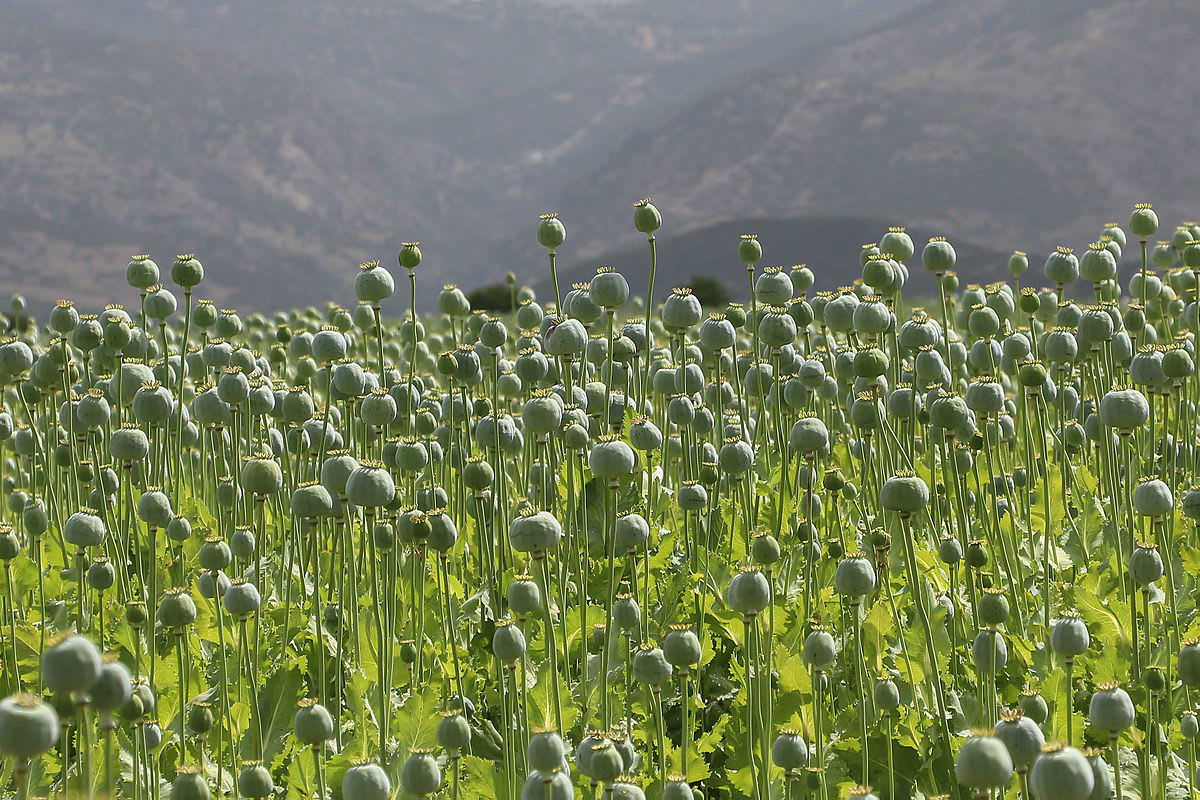
In this Ox Tales podcast from the Oxford Food Symposium, Aylin Öney Tan talks to Anna Sigrithur about the village of Isamailkoy in the Afyon Provence of West Central Anatolia, which is working to continue the cultivation of a traditional crop, the opium poppy. International pressures to crack down on opiates have led to strict regulations in Turkey, making opium poppy production particularly difficult. Click here to listen and find out how the villagers of Isamailkoy are facing these issues and preserving their traditional poppy.
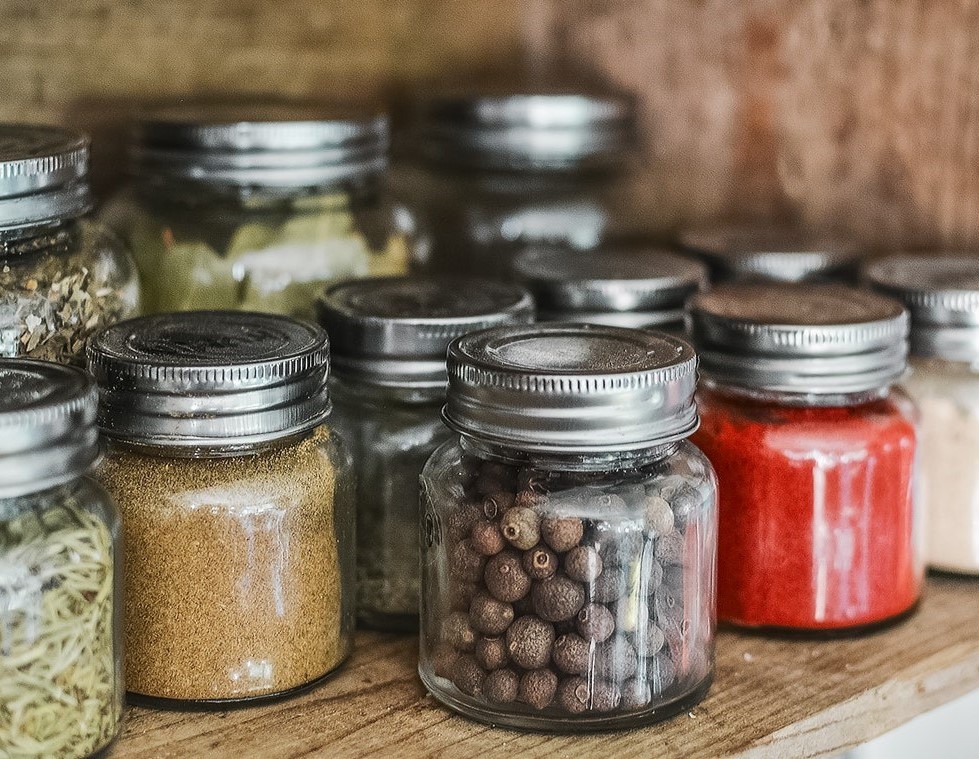
Like the differing architecture and linguistic features, the North and South of India have separate staple foods, with many variations between their traditions. Cooks from the North may have many dry spices in store, such as cardamom, ginger, turmeric and black pepper, while cooks in the South use few dried spices, and instead rely on fresh ingredients that are purchased day to day. The regional variation is more complex than a simple North – South divide, however; click here to learn more about the culture of food in India, and the many variations between the regions.
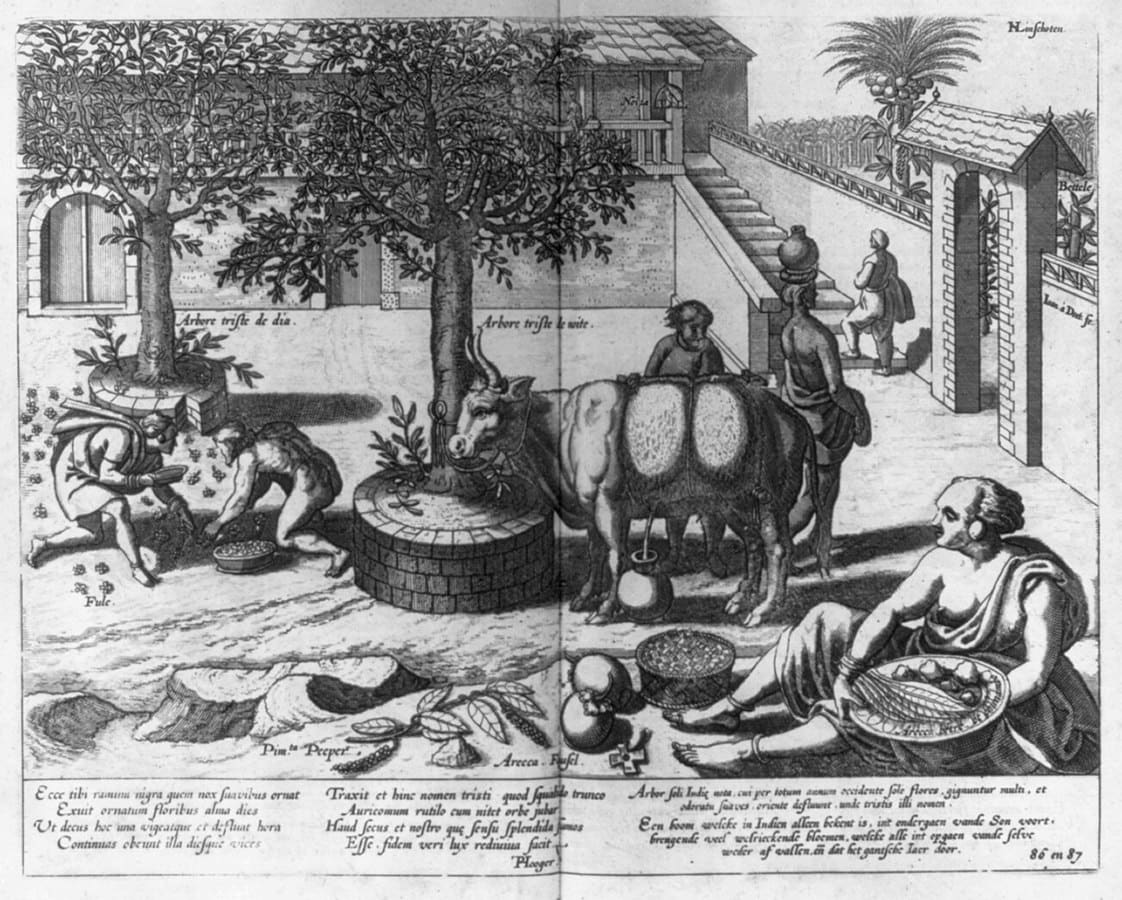
It is difficult to identify the place of origin for some spices; throughout history they have been introduced to many habitations worldwide, making it tricky to determine whether a spice is indigenous to the area or not. Historic written sources that mention plants, such as the works of Aristotle, Virgil and Pliny, can be problematic as factual records, emphasised by the contrasting names of spices in Greek or Latin texts. This chapter explores the difficulties of reconstructing the ancient history of spices, and attempts to outline the origin of spices used historically and today.

In this chapter from Culinary Nationalism in Asia, Jean Duruz builds on issues of migration, place-making and identity, and explores the cultural and gastronomic scene of cities. Focusing particularly on Spice Alley in Australia, a complex of restaurants and other retail spaces, Duruz describes the creation of ‘Asian’ eateries in the Sydney dining scene and how this fits within ideas of Australia’s national imagination. Click here to join Duruz on a trip down Spice Alley as she hunts for Iasksa, a distinctive Nyonya dish.

In this chapter from Food and Identity in England, 1540–1640, Paul S. Lloyd describes the cultural implications of spices, which, as a staple synonymous with foreign continents, provided a ‘link with the sophisticated Mediterranean world’. This lifestyle of abundance was a hallmark of cultural identity for the elite classes in contemporary English society. Lloyd explores the use of spices during the fifteenth to seventeenth centuries and provides extensive details on the prices of the various spices.
The simple act of cooking reveals much about a culture, from its food choices, local produce, food preparation and eating habits. This Topic in Focus places a spotlight on cooking culture and brings together key material to guide and support your discovery of this key topic. From podcasts and eBooks, to pedagogical research tools and reference works such as Food Cultures of the World Encyclopedia, discover how the act of cooking can shape cultural identity.

Food Cultures of the World Encyclopedia, edited by Ken Albala, reveals how much we can learn about a different culture from its food choices, food preparation rituals, and eating habits. This four-volume reference work covers Africa and the Middle East, the Americas, Asia and Oceania, and Europe. In this chapter Leena Trivedi-Grenier looks at traditional Aboriginal Australian cooking and the organisations that are preserving this culinary heritage, with a ‘food culture snapshot’ illustrating traditional recipes such as damper bread and quandong crumble.
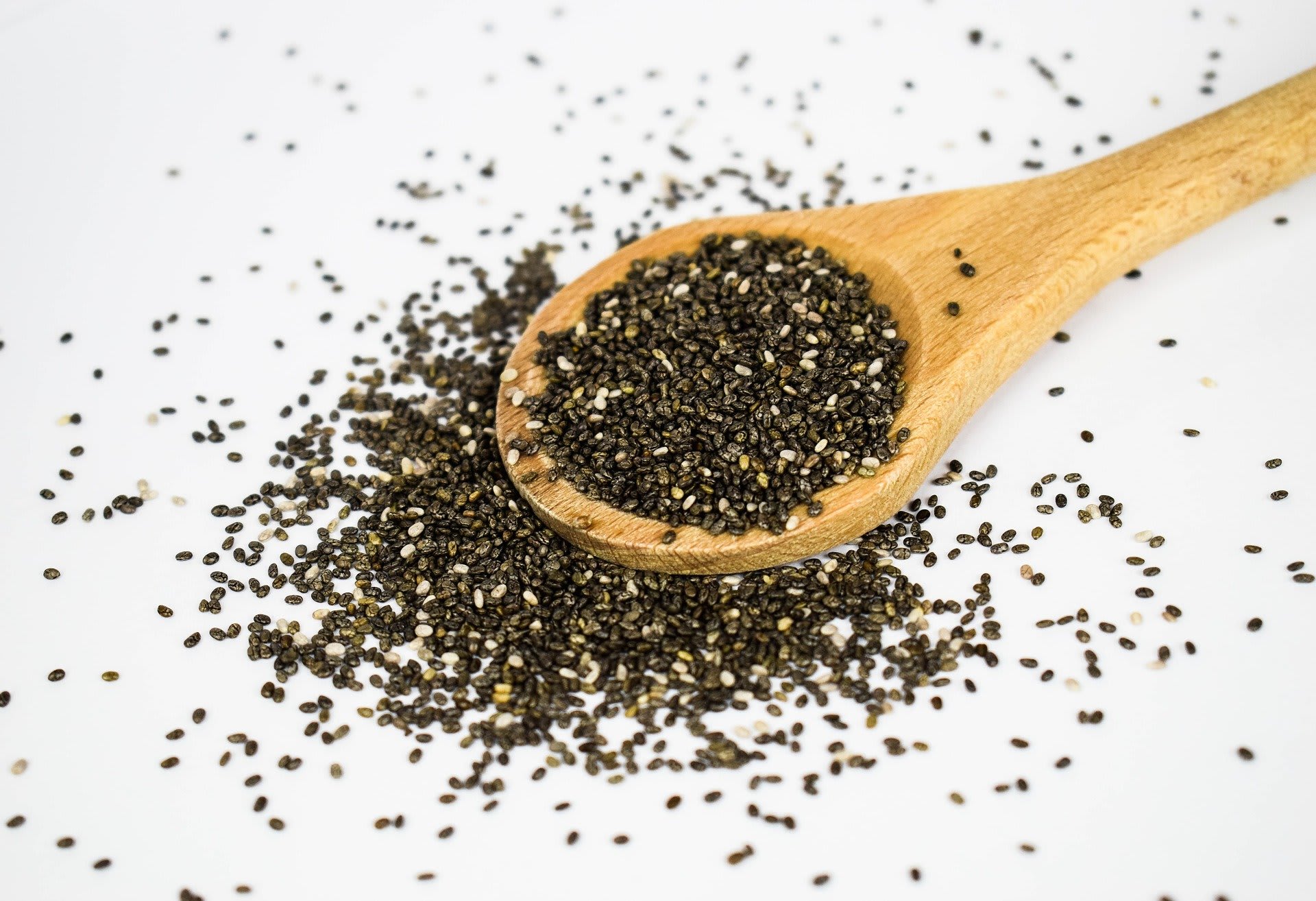
Over the past few decades, there has been a resurgence in indigenous food ways all around North America led by a network of people who are bringing back traditional food, cooking knowledge, and ancestral seeds into their communities and onto their tables. In this Ox Tales podcast from the Oxford Food Symposium, Anna Sigrithur talks to Sean Sherman, owner of The Sioux Chef and author of The Sioux Chef's Indigenous Kitchen, and Elizabeth Hoover, American Studies Professor at Brown University, to discuss this cultural cooking revival.

Bloomsbury Food Library provides a host of carefully curated learning and research tools to support instructors creating courses, and students new to a subject. This lesson plan by Joanne Hollows introduces students to key approaches to understanding food as a cultural form, combining theories and insights from disciplines such as sociology, geography, and anthropology. With links to additional reading, discussion topics, and homework assignments, this lesson plan is a useful navigational tool to make the most of the extensive content available on the Bloomsbury Food Library.
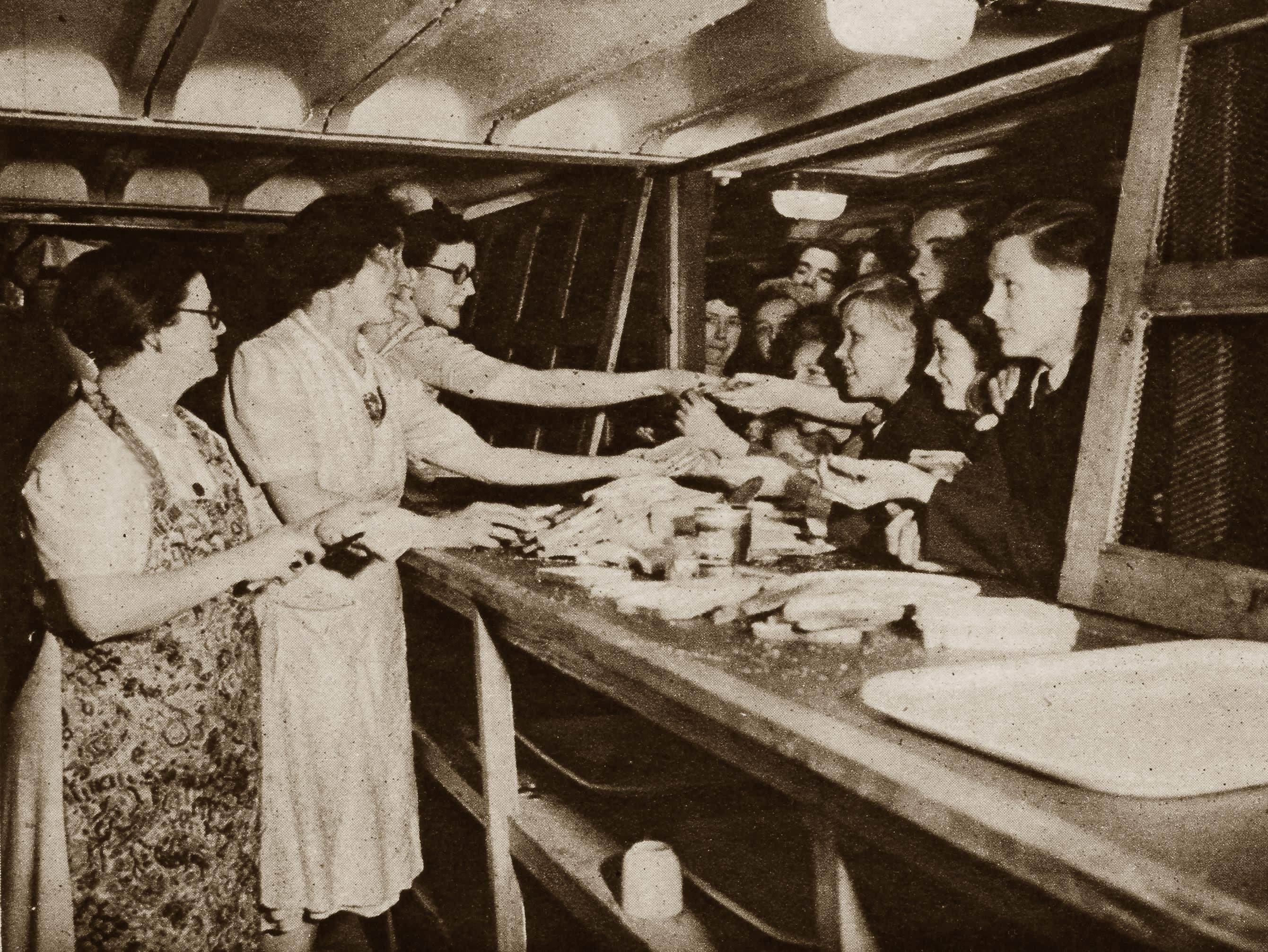
Bloomsbury Food Library provides access to an extensive host of image collections from leading museums and galleries from the Metropolitan Museum of Art, to the National Archives, which offer students and instructors innovative ways to discover and research food in context. This 1944 photograph from The National Archives for example, provides a unique insight into the culture of cooking and eating in wartime Britain. Three women prepare and hand out food to a large crowd of children at a stand in the London Underground, which doubled as a public deep shelter during World War II.

The significance of food culture is recognized as an identity marker by many Costa Ricans. In this chapter from Cooking Technology, Mona Nikolić Lai explores cooking techniques as markers of identity and authenticity in Costa Rica’s Afro-Caribbean foodways. With the significance of authenticity as a measure for the legitimacy of a cultural experience, cooking techniques are gaining in importance, both as proof of authenticity of the Caribbean food on offer, and as a means of constructing and displaying local Caribbean identity.

The activity of cooking has come to occupy an increasingly ambiguous place in our use of language. Over the last 100 years or so, culinary practices have become increasingly mediated by the incorporation of cultural objects, such as pans, and open-fire cooking has gradually been replaced with ovens, hobs, and microwaves. However, the verb “to cook” is limiting in itself if we adopt the popular understanding of the word espoused by Lehrer, since it includes only food that has been transformed by heat. By that rationale, does cooking include the heating up of beans in a microwave, but not elaborately prepared sushi? Click here to find out.
To celebrate the 2021 Oxford Food Symposium, which this year focuses on the subject of food and imagination, we have brought together some key material from the Bloomsbury Food Library that explores the imaginative, creative process that transforms what we eat, and its power to shape the self. From food fetishism modern media, and the creative process of food blogging, to the study of food art, and the geographical imagination, this Topic in Focus is your gateway into this fascinating topic.

To understand how food stitches together such a wonderful mosaic of materialities, people, places, spaces, and scales takes what David Harvey and others have called a “geographical imagination.” This geographical imagination is vital in helping us to understand and interpret the vast array of information and data now available concerning food and all its many dimensions. A geographical imagination provides a powerful window, not just on who eats what, but also on how the world’s food systems are put together and why food production and consumption work—or don’t—for different people and places. Read more with this chapter from the recently published Geographies of Food.

This chapter from Food History: Critical and Primary Sources explores the development of the food blog as a primary site of self-formation in the twenty-first century. Like cooking, food blogging involves the production of material culture, but it is the production of material media based around the object rather than the object itself. Blogging involves a number of creative processes, including writing, photography, and combining words and images, all of which are performed using digital technology. Thus, food blogging may be considered a form of digital creative production that involves making new material media through digital technologies.

In the case of food media, it is clear that imagination has played a central role for a long time. We have seen how food television has, since its beginnings, straddled a tenuous boundary between education and entertainment, and between fantasy and reality. This chapter from Food Media looks at two British celebrity chefs, Heston Blumenthal and Nigella Lawson, who both exemplify the strongest vicarious and imaginary function of food television, not because it really is impossible to learn anything from them, or to recreate at least some of their dishes in an everyday kitchen, but because their brands are built on fetish.

In this chapter from Food and the Self, Isabelle De Solier examines the creative process of making something with your own hands, and its significance in self-making and identity. The manual, or specifically hand-based, nature of production in cooking is central to its appeal as a form of productive leisure in postindustrial self-making. De Solier traces this need to engage in creative and productive activity through history, and outlines the modern need to be a producer of material objects not just a consumer. This form of material production is of utmost importance as a new mode of self-making through material culture in a postindustrial society.

Many chefs today offer culinary creations that prompt an emotional response sparked by a cobination of flavors and textures, experienced intimately by each diner. They offer multisensory, participatory experiences and blur the boundaries between art and everyday life. This chapter from The Handbook of Food and Popular Culture focuses on exploring food as a medium for art (rather than a subject), and aims to think through the work of professional chefs in the context of art and “high” culture. Beginning in the 1930s, Yael Raviv explores the role of food as a medium in certain avant-garde movements and proceeds to look at their influence on later work in the studio and the kitchen.

Women’s predilection for food imagery and symbolism in literary works has been a growing interest for scholars at least since the 1980s. Dacia Maraini’s ‘obsession’ with food dates back to her traumatic experience of a Japanese concentration camp during the Second World War. The hunger she suffered then inevitably shaped her aesthetic and literary imagination. Food – or lack of it – has become a quasi-ubiquitous motif in her writings. Maria Morelli analyses this recourse to food imagery in Maraini’s works and argues that the act of preparing, presenting or consuming meals, while reaffirming food as central in the shaping of the female experience, also bespeaks the author’s preoccupations with an essentialist model of female identity.

Melissa L. Caldwell is Professor of Anthropology at the University of California at Santa Cruz, USA, and is a well-known voice in the field of food studies. A member of the Bloomsbury Food Library’s own Editorial Advisory Board, Caldwell is an expert on food, poverty and welfare in Russia and the formerly Soviet world, and was the sole editor of Gastronomica: The Journal of Critical Food Studies until 2019. Click here to discover the works by Melissa L. Caldwell, which are made digitally available through the Bloomsbury Food Library.
What is food and why does it matter? This is the vital topics addressed in Caldwell’s Why Food Matters: Critical Debates in Food Studies (2021). Bringing together the most innovative, cutting-edge scholarship and debates, this reader provides an excellent introduction to the rapidly growing discipline of food studies. Covering a wide range of theoretical perspectives and disciplinary approaches, it challenges common ideas about food and identifies emerging trends which will define the field for years to come. In this chapter, Caldwell looks at the digestive politics in Russia.
As well as writing and editing a number of monographs, Caldwell has contributed to other fey works within the field of food studies, such as The Handbook of Food and Anthropology (2016). Caldwell’s article “Practising Food Anthropology” discusses the value of ethnographic studies of food to the corporate food world, the types of new methods that are being developed, the ethical quandaries provoked by these collaborations, and possibilities for new ways of doing anthropology.

For 30 years, since the publication of her landmark book the Sexual Politics of Meat, Carol J. Adams and her readers have continued to document and hold to account the degrading interplay of language about women, domesticated animals, and meat in advertising, politics, and media.
Serving as sequel and visual companion, Adams’ brand new book the Pornography of Meat charts the continued influence of this language and the fight against it. With over 300 images, this new edition brings the book up to date to include expressions of misogyny in online media and advertising, the #MeToo movement, and the impact of Donald Trump and white supremacy on our political language. Read the opening chapter here. [Content Warning.]
Adams’ has also contributed to the Object Lessons collection, a series of short, beautifully designed books about the hidden lives of ordinary things. Burger is a fast-paced and eclectic exploration of the history, business, cultural dynamics, and gender politics of the ordinary hamburger.
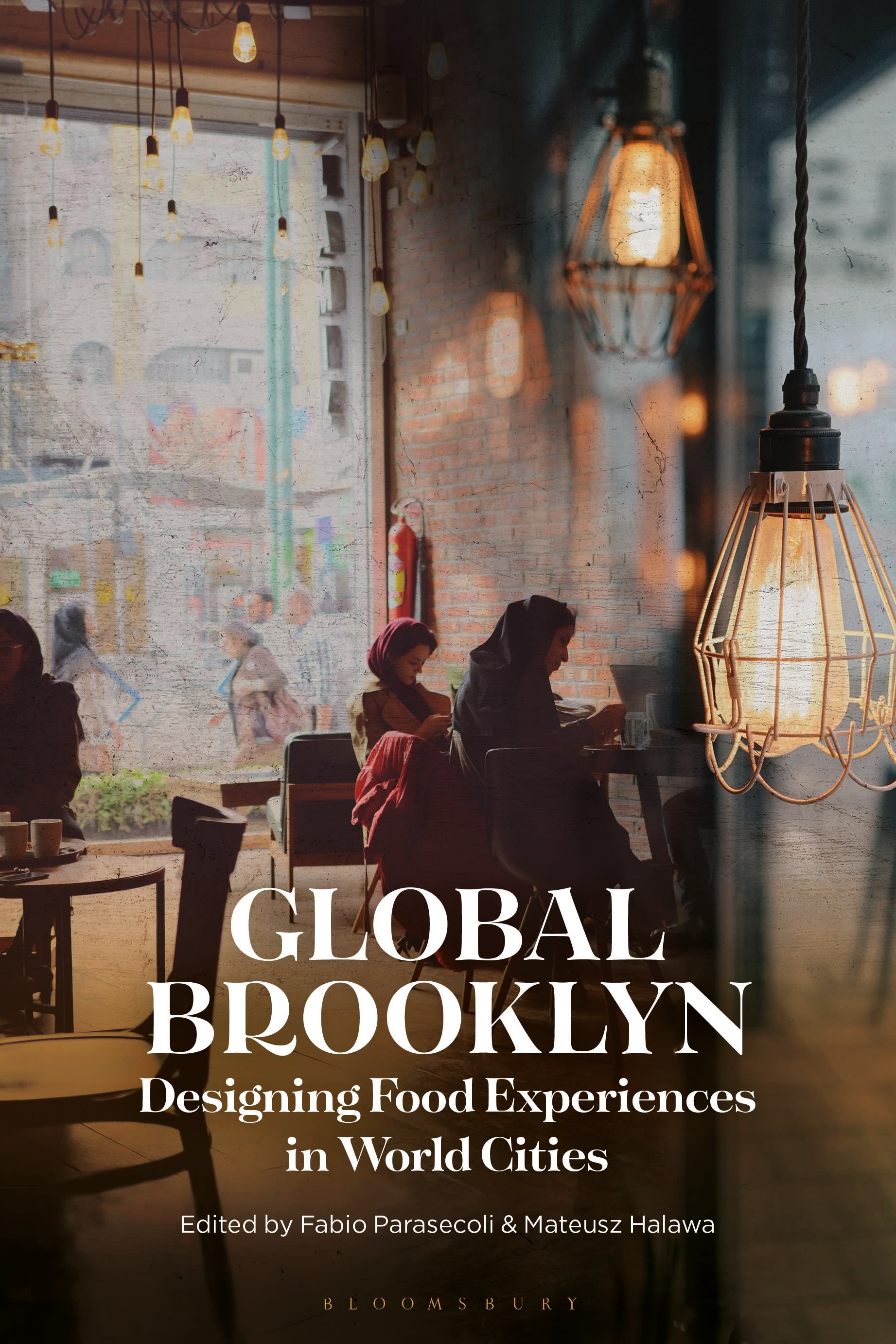
Fabio Parasecoli is a well-known voice in the field of food studies, and is a Director of the Food Studies PhD Program at New York University. His research explores the intersections among food, media, and politics, in particular in the fields of food heritage and intellectual property. A member of the Bloomsbury Food Library’s own Editorial Advisory Board, Parasecoli has written or edited extensively in the field of food studies. Click here to discover the works by Fabio Parasecoli , which are made digitally available through the Bloomsbury Food Library.
Parasecoli's acclaimed Bite Me (2008) considers the ways in which popular culture reveals our relationship with food and our own bodies and how these have become an arena for political and ideological battles. Drawing on an extraordinary range of material – films, books, comics, songs, music videos, websites, slang, performances, advertising and mass-produced objects – Bite Me invites the reader to take a fresh look at today’s products and practices to see how much food shapes our lives, perceptions and identities.
Parasecoli is the editor of a number of titles, such as Global Brooklyn: Designing Food Experiences in World Cities (2021). Co-edited with Mateusz Halawa, it brings together a collection of essays that explore ‘Global Brooklyn’ a new transnational aesthetic regime of urban consumption, shaped by many networked locations where consumers participate in the global circulation of styles, flavors, practices, and values. This book follows this phenomenon across different world cities, arguing for a stronger appreciation of design and materialities in understanding food cultures. Attentive to local contexts, struggles, and identities, contributors explore the global mobility of aesthetic, ethical, and entrepreneurial projects, and how they materialize in everyday practices on the ground.

Professor of History at the University of the Pacific and chair of the Food Studies MA program in San Francisco, Ken Albala is a well-known voice in the field of food history. A member of the Bloomsbury Food Library’s own Editorial Advisory Board, Albala has written or edited 25 books in the field of food studies. Click here to discover the extensive list of works by Ken Albala which are made digitally available through the Bloomsbury Food Library.
Albala’s award-winning Beans: A History tells the untold story of the bean, the staple food cultivated by humans for over 10,000 years. From Pythagoras’ notion that the bean hosted a human soul to St. Jerome’s indictment against bean-eating in convents (because they “tickle the genitals”), to current research into the deadly toxins contained in the most commonly eaten beans, Albala takes the reader on a fascinating journey across cuisines and cultures.
Albaba is the editor of a number of leading series, such as A Cultural History of Food in the Renaissance, which presents an overview of the period with essays from leading scholars, and the ground breaking Food Cultures of the World, which reveals how much we can learn about a different culture from its food choices, food preparation rituals, and eating habits. In this comprehensive four-volume reference work, Albala and a team of dedicated food scholars cover Africa and the Middle East, the Americas, Asia and Oceania, and Europe to track systematically through a spread of countries in each of these regions.

Peter Scholliers is Emeritus Professor of Contemporary History at the Vrije Universiteit Brussel, Belgium, and is an invaluable member of the Bloomsbury Food Library’s Editorial Advisory Board who has been a well-known figure in the field of food studies for many years. Peter specializes in European food history and has written numerous works on Belgian foodways. Click here to explore all of the works by Peter Scholliers available on the Bloomsbury Food Library.
Peter’s expertise spans a wide breadth of subject areas within the field of food history and culture. His Food Culture in Belgium opens up the entire food culture spectrum and reveals Belgian food habits through time, providing the most comprehensive overview available in English. The brand new work A History of Bread delves into the history of this pivotal food item to map out its defining moments and people, looking at consumers, bakers and governments to explain how and why this food that once powered an entire continent has fallen by the wayside, and what this means for the modern age.
Bloomsbury Food Library also provides access to a number of key reference works and anthologies edited by Peter, including Writing Food History, a vibrant compendium of global and multicultural essays co-edited with Kyri W. Claflin, Food, Drink and Identity, a fascinating study of cultural patterns in consumer societies, and Eating Out in Europe, a comprehensive and illustrated examination of eating patterns in Europe from the late eighteenth century, co-edited with Marc Jacobs.
As well as writing and editing a number of monographs, Peter has contributed to other key works within the field of food studies, from a chapter on the food history and culture of Belgium in the Food Cultures of the World Encyclopedia, and an entry on feeding growing cities from the Handbook of Food Research, to an article on the societal and performative act of eating out from the renowned Cultural History of Food reference work.